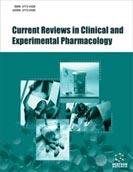Abstract
Background: Ceftriaxone is recommended for empiric antimicrobial therapy in patients with sepsis. Therapeutic Drug Monitoring (TDM) guided dose optimisation could elucidate pharmacokinetic variabilities, improving treatment efficacy. However, detailed data on Ultra-Performance Liquid Chromatography-Tandem Mass Spectrometry (UPLC-MS/MS) for unbound ceftriaxone quantification in serum are scarce.
Objective: The authors aimed to develop a reliable UPLC-MS/MS method for serum ceftriaxone quantification and exhibit its application potential in routine hospital settings.
Methods: In this observational, single centre study, UPLC-MS/MS method validation included specificity, carry-over, linearity, repeatability, intermediate precision, accuracy, the limit of quantification, and plasma protein binding. Unbound and total ceftriaxone were quantified in the serum of 5 critically ill patients. Pharmacokinetic/Pharmacodynamic (PK/PD) target attainment calculations were performed for both unbound and total ceftriaxone. The PK/PD target for unbound ceftriaxone in serum was set at 4 times the non-species related minimum inhibitory concentration breakpoint of 1 mg/L for at least 60% of the dosing interval.
Results: The UPLC-MS/MS method revealed acceptable limits for clinical samples, with coefficients of variation < 15.0% for concentrations between 0.2 – 400.0 mg/L. Ceftriaxone eluted at 1.94 min and ceftazidime, as internal standard, eluted at 1.42 min. Patients demonstrated a median unbound ceftriaxone fraction of 29.1% (IQR: 15.2 – 52.2). Day 1 of ceftriaxone treatment presented a median PK/PD target attainment of 100.0% (IQR: 81.1 – 100.0) for unbound ceftriaxone in serum, while for calculations based on total concentrations, this figure was 23.9% (IQR: 10.5 – 80.6).
Conclusion: The described UPLC-MS/MS method enables reliable and rapid ceftriaxone quantification in the serum of critically ill patients. Method feasibility was exhibited for TDM purposes in routine clinical practice.
Keywords: Ceftriaxone, unbound, monitoring, mass spectrometry, critically ill, albumin.
Graphical Abstract





























